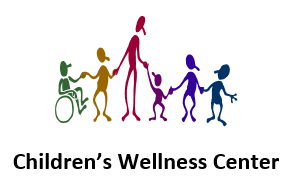Transitions and changes are a normal part of life, and they’re required for growth, development, and learning. Transitioning into middle school or high school requires students to experience, endure, and adjust to significant changes while finding a sense of belonging in a new place among a new set of peers. During these transitions, students enter a new environment, meet a new set of faculty, face increasing academic challenges, take on more responsibilities, and navigate shifting social dynamics — all while they undergo rapid physical and emotional development during adolescence.
Needless to say, these transitions can be seriously challenging and stressful for all students — even the most socially and academically adept. Although your tween or teen may not admit it, they will need your support, help, and encouragement to help guide them through the transition to a new school.
Adjusting to a New Environment
Transitioning to a new school comes with all sorts of challenges, and being in an unfamiliar environment can make everything else seem even more daunting to your child. If your child has a chance to familiarize themselves with their new school before they begin classes, take it.
Take your child to an official orientation, open house, or another public event at their new building, and use the time to explore with them. Find the cafeteria, the front office, the nurse’s station, the restrooms, the gym, and their homeroom (if you know the room number).
Having the opportunity to get their bearings and familiarize themselves with their new environment will alleviate lots of stress and anxiety during their first days of junior high or high school.
Adjusting to a New Schedule
Students entering high school will already be used to switching classes and visiting their locker, but these things are new for students entering middle school. Talk with your child about these changes, find out if they have any questions, and help them celebrate how they are growing up. Be sure to review your child’s class schedule with them to make sure they know where each class is located.
Addressing Academic Challenges
Moving into middle school or high school means needing to meet elevated academic expectations. This will include an increased workload and more homework. Plus, your child will need to learn to adjust to a variety of teaching styles, classroom rules, and teacher expectations, as they will no longer have a single teacher for every subject throughout the day.
Help your child learn to manage their time by setting boundaries and rules regarding how they prioritize their free time during the evenings and weekends, ensuring they get their homework done while participating in activities and still finding time to relax and get enough sleep.
Keep an eye on your child’s academic performance, so that you can step in and help them find additional academic support, when needed, with tutoring or study sessions before they fall behind.
Supporting Social and Emotional Well-Being
During middle school and high school, it’s important for children to develop academically while also developing socially and emotionally. Parents can encourage their children to participate in extracurricular activities, like athletics, band or orchestra, or other clubs. This will help them discover new interests and talents while also interacting with a wider variety of peers. Parents can help encourage their children to foster friendships and be open to meeting new friends.
If students become stressed due to too many commitments or new social challenges, parents should work with them. Provide support by helping your child develop healthy coping mechanisms while guiding them toward solutions to prevent similar stressful situations from occurring in the future.
Remember that while extracurricular activities are important, your child’s happiness and well-being still need to come first. Help your child prioritize their activities to create balance and moderation in their weekly schedule.
Additional Steps Parents Can Take to Help Their Children Succeed
To help your child succeed in their transition to junior high or high school, consider the following tips:
- Communicate with your child about their experience, positives, challenges, and questions.
- Communicate with your child’s teachers. This is especially important if your child requires any accommodations, experiences social difficulties, struggles with a particular subject, or excels in a particular subject. The more your child’s teachers know, the better they will be able to support them.
- Stay informed and get involved. Attend orientation, open house, and parent-teacher conferences. Consider volunteering for events, fundraisers, or other activities that require parent chaperones or organizers.
- Don’t rely on your child delivering information (news, requirements, events, or updates) to you.
- Set a consistent routine for your child and prioritize their sleep.
Ensuring a Successful Transition Into the Next Chapter of Your Child’s Life
In addition to helping your child navigate the different challenges of a new school, you can also make sure they are physically prepared for a healthy experience.
Our pediatricians at Children’s Wellness Center can ensure that your child is up-to-date with all of their vaccinations that are required before entering middle school or high school. Additionally, if your child plans to participate in school-sponsored sports and athletics, they might be required to have a school and sports physical to ensure their safety.
If you have any questions about preparing for your child’s transition into junior high and high school, please contact us.

